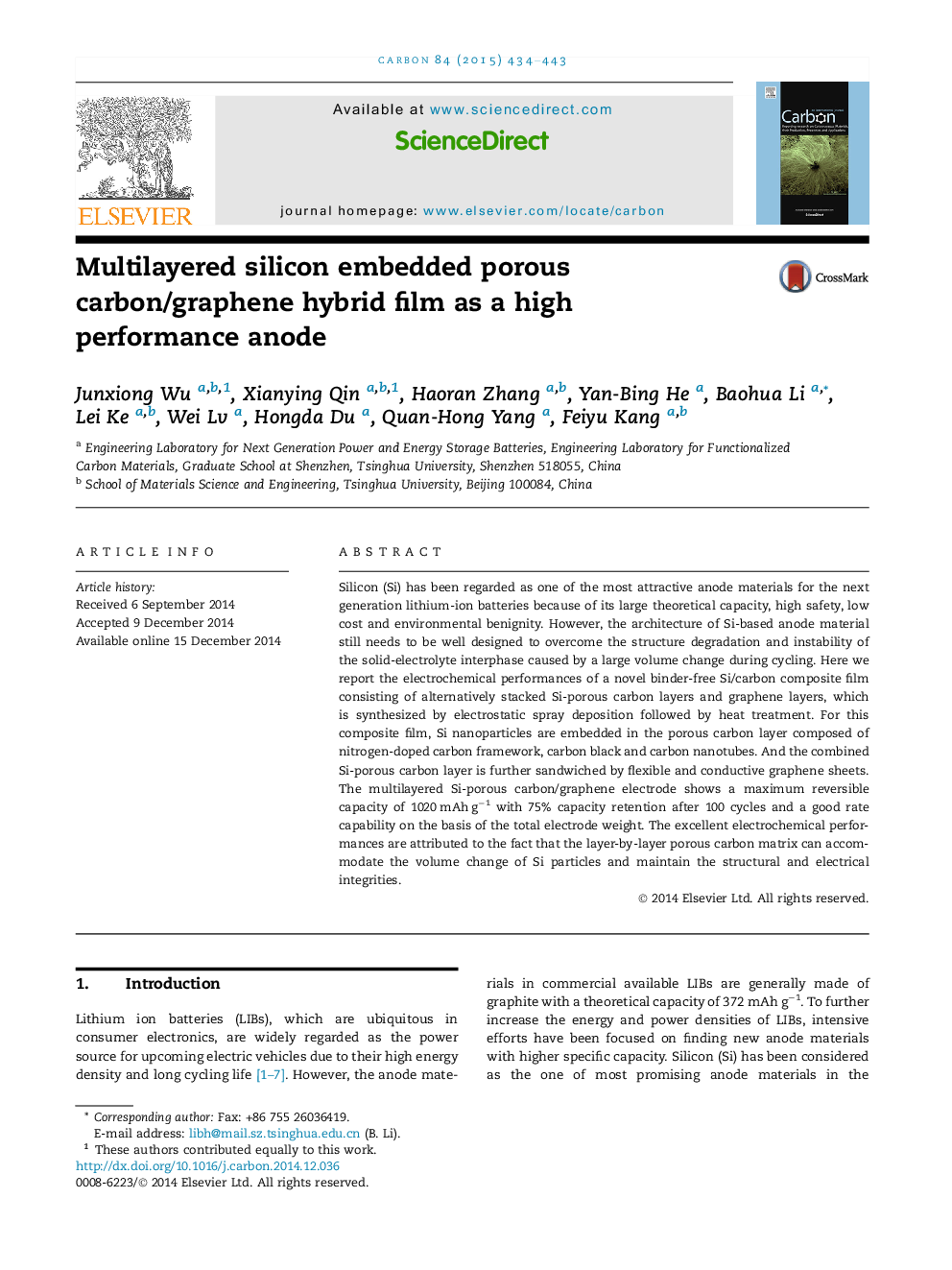| Article ID | Journal | Published Year | Pages | File Type |
|---|---|---|---|---|
| 7852023 | Carbon | 2015 | 10 Pages |
Abstract
Silicon (Si) has been regarded as one of the most attractive anode materials for the next generation lithium-ion batteries because of its large theoretical capacity, high safety, low cost and environmental benignity. However, the architecture of Si-based anode material still needs to be well designed to overcome the structure degradation and instability of the solid-electrolyte interphase caused by a large volume change during cycling. Here we report the electrochemical performances of a novel binder-free Si/carbon composite film consisting of alternatively stacked Si-porous carbon layers and graphene layers, which is synthesized by electrostatic spray deposition followed by heat treatment. For this composite film, Si nanoparticles are embedded in the porous carbon layer composed of nitrogen-doped carbon framework, carbon black and carbon nanotubes. And the combined Si-porous carbon layer is further sandwiched by flexible and conductive graphene sheets. The multilayered Si-porous carbon/graphene electrode shows a maximum reversible capacity of 1020 mAh gâ1 with 75% capacity retention after 100 cycles and a good rate capability on the basis of the total electrode weight. The excellent electrochemical performances are attributed to the fact that the layer-by-layer porous carbon matrix can accommodate the volume change of Si particles and maintain the structural and electrical integrities.
Related Topics
Physical Sciences and Engineering
Energy
Energy (General)
Authors
Junxiong Wu, Xianying Qin, Haoran Zhang, Yan-Bing He, Baohua Li, Lei Ke, Wei Lv, Hongda Du, Quan-Hong Yang, Feiyu Kang,
